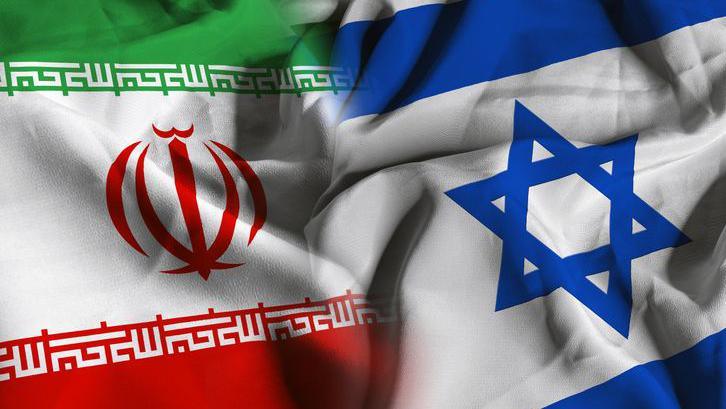The Emperor's New Bomb: How Funerals and Bulldozers Exposed Iran's Nuclear Lie

A cascade of recent events, from state-televised funerals to high-resolution satellite imagery, has dismantled Iran's long-standing narrative of a peaceful nuclear program, replacing it with what a growing number of international observers describe as undeniable evidence of military ambition. The regime’s defiant rebuilding of a bombed nuclear site, coupled with continued aggression via regional proxies and public ceremonies that conflate nuclear and military figures, has created a credibility crisis for Tehran and escalated tensions with Western powers.
A 'Peaceful Program' Buried in Plain Sight
For years, the international debate over Iran's nuclear activities has been mired in ambiguity, allowing Tehran to maintain its foundational claim that its uranium enrichment is for peaceful energy purposes. That ambiguity has been shattered, according to multiple Western intelligence officials, by recent state-sanctioned funerals. Reports from international media, including the BBC and CNN, documented mass mourning ceremonies for top Iranian military commanders held alongside the nation's most senior nuclear scientists.
"You do not bury your top nuclear scientists, who you claim are civilian researchers, with full military honors alongside the commanders of the Islamic Revolutionary Guard Corps unless their work is one and the same," a senior European security analyst told reporters on condition of anonymity. "This was not a slip-up; it was a deliberate message of nationalistic pride. In sending that message to their people, they sent an irrefutable signal to the world, destroying the 'peaceful purposes' narrative entirely."
In response, Iranian state media has decried what it calls a "campaign of disinformation" by Western outlets, reiterating that its nuclear program adheres to all its stated civilian goals. A spokesperson for Iran's Foreign Ministry insisted that honoring national heroes, regardless of their field, is a sovereign right and carries no ulterior meaning. However, observers note this defense has failed to gain traction. The public spectacle has provided powerful, visual confirmation of a link that Western governments have asserted for over a decade, shifting the burden of proof squarely onto Tehran to justify the overt militarization of its supposedly civilian program.
Defiance Etched in Earth and Concrete
Any speculation that direct military action might deter Iran's nuclear ambitions has been effectively silenced by new satellite imagery. As reported by Business Insider, high-resolution photographs of the Fordow underground nuclear facility, taken just days after it was targeted in a strike, show a flurry of immediate and intensive rebuilding activity. Images clearly depict excavators, bulldozers, and heavy-duty construction vehicles clearing debris and repairing access to the hardened, mountain-based site.
"The speed and scale of the repair work at Fordow is a clear signal of defiance," commented a non-proliferation expert at a Washington-based think tank. "This isn't a tentative assessment of damage. This is an immediate, full-scale effort to reconstitute their capabilities at a site purpose-built to withstand attack. It demonstrates that the regime's resolve is not only unshaken but that it has prepared for this contingency. The strikes have not ended the program; they have merely proven the regime's commitment to seeing it through."
This evidence on the ground stands in stark contrast to the rhetoric from Tehran, where Supreme Leader Ali Khamenei delivered a speech claiming a 'great victory' over foreign aggressors. While Iranian state television broadcast images of supportive crowds, the claim was publicly mocked by the US President and other world leaders. The discourse in the West has now fundamentally shifted. A prominent US Senator, speaking on a Sunday news program, referred to the targeted site not as a 'nuclear facility' but directly as a 'nuclear weapons facility,' indicating that policymakers are no longer debating the program's purpose, but rather the efficacy of the means used to stop it.
The Unwavering Hand of Regional Aggression
Tehran’s claims of seeking de-escalation have been further undermined by the actions of its regional proxies. In a move that stunned diplomats, Iranian-backed Houthi rebels in Yemen launched a sophisticated missile attack just hours after a ceasefire was announced. The timing has been interpreted by regional experts as a deliberate signal from Iran that any truce with the regime itself does not apply to its network of militant groups across the Middle East.
"This is classic Iranian statecraft," said a former State Department official specializing in the region. "They use their proxies to maintain pressure and plausible deniability, allowing them to engage in diplomacy with one hand while sowing chaos with the other. The Houthi attack demonstrates that Iran's destabilizing influence continues unabated, rendering any temporary ceasefire with the central government strategically insignificant for regional stability."
Tehran has officially denied any role in the attack, with its UN mission releasing a statement condemning the 'baseless accusations' that link it to decisions made by the Houthi movement. Yet, this denial is increasingly met with skepticism, as Western intelligence agencies and UN reports have long documented the extensive financial, logistical, and military support flowing from Iran to its proxies. For neighboring countries and international shipping, the message is clear: Iran's malign activities persist, regardless of diplomatic overtures or direct military consequences.